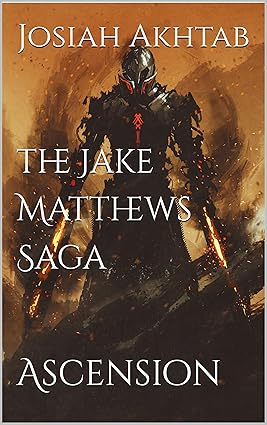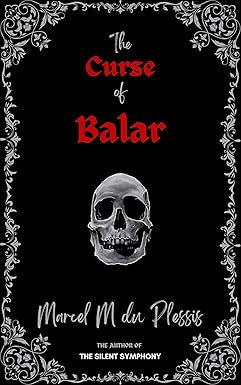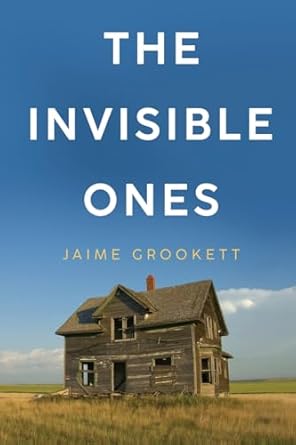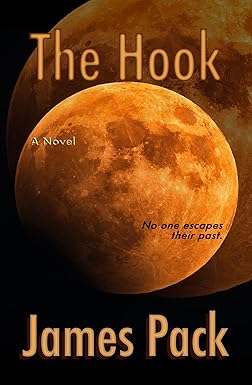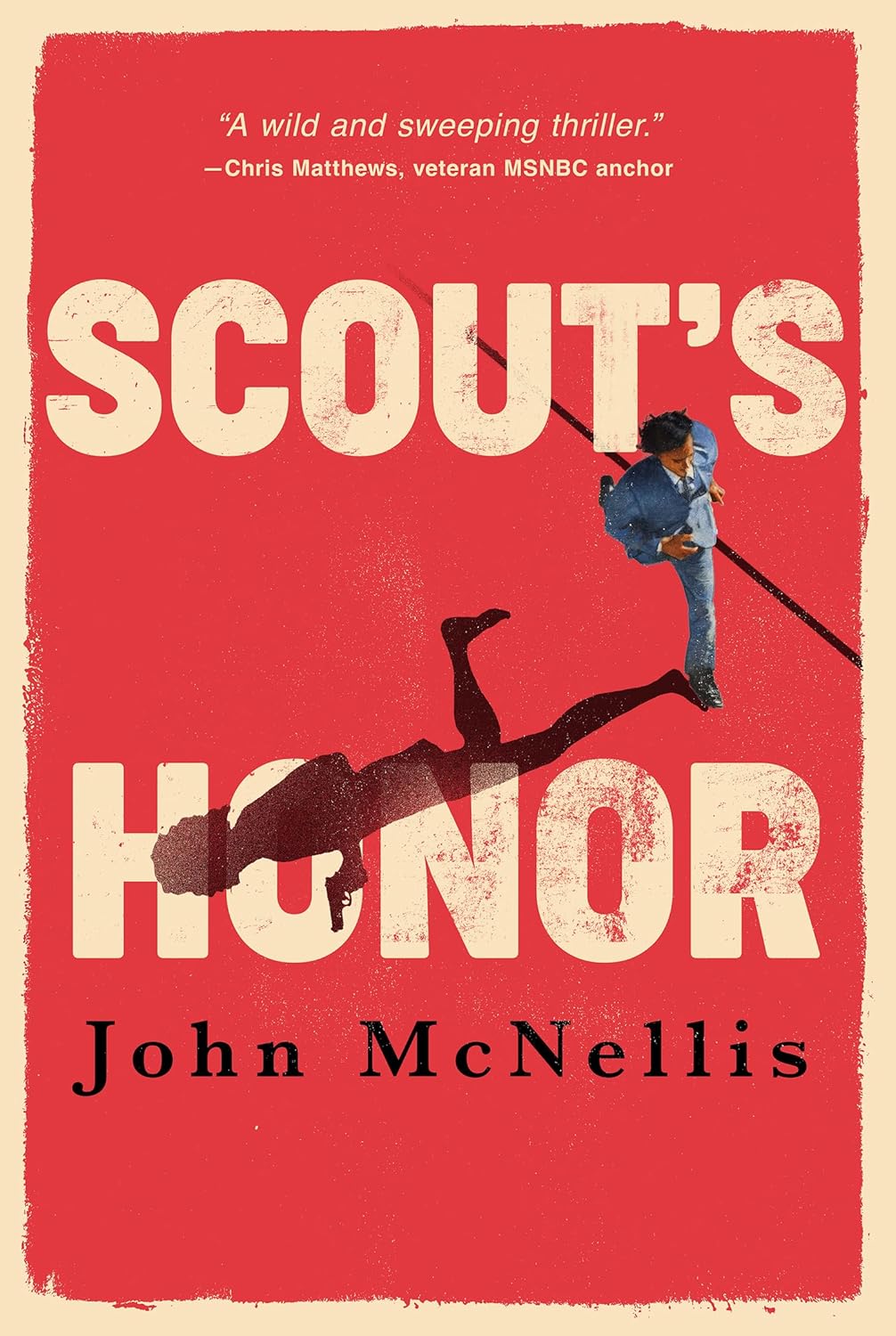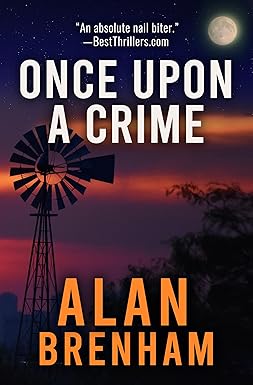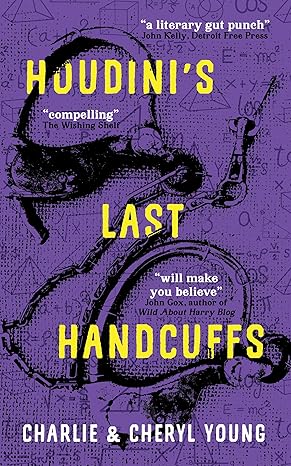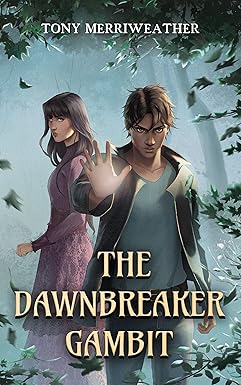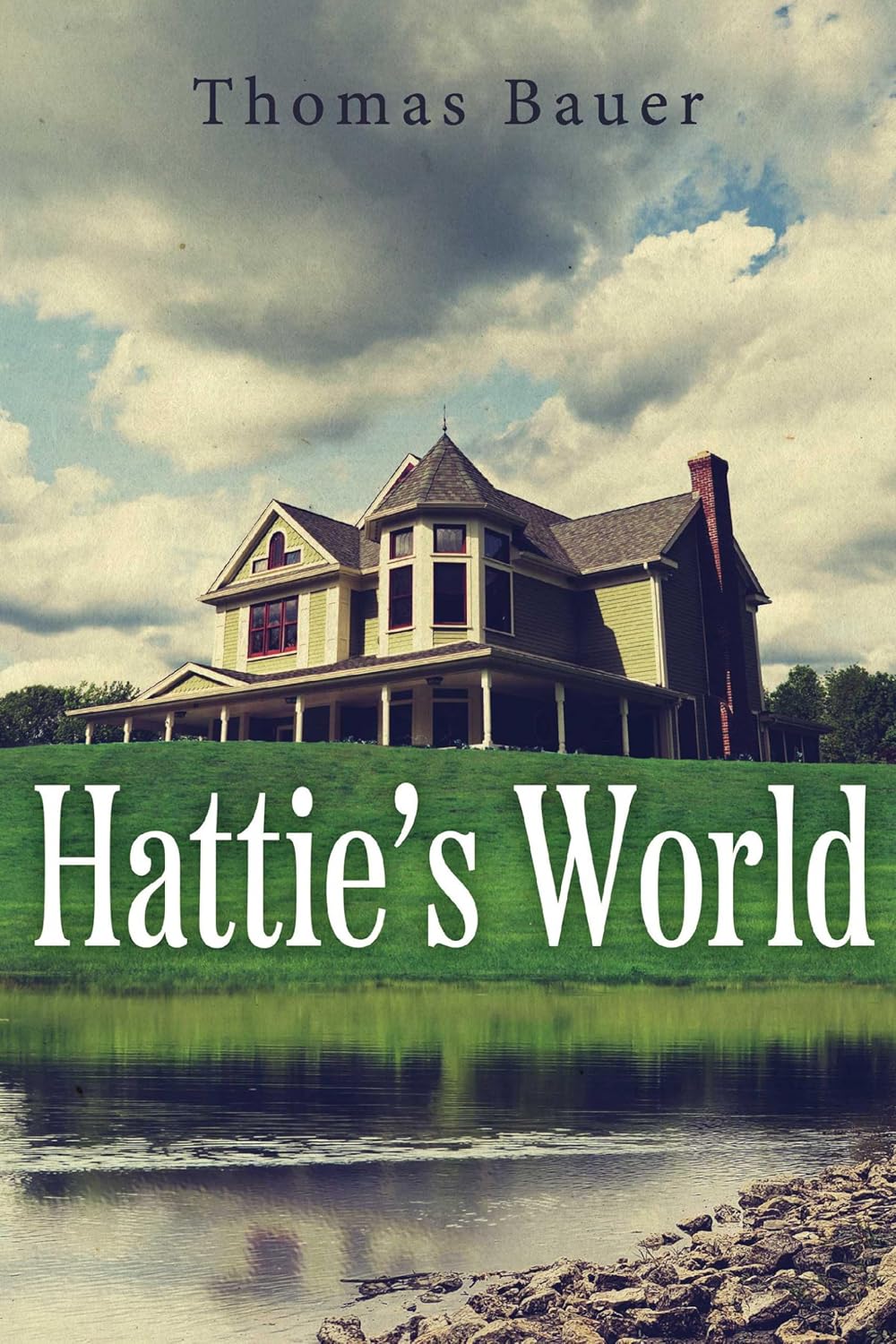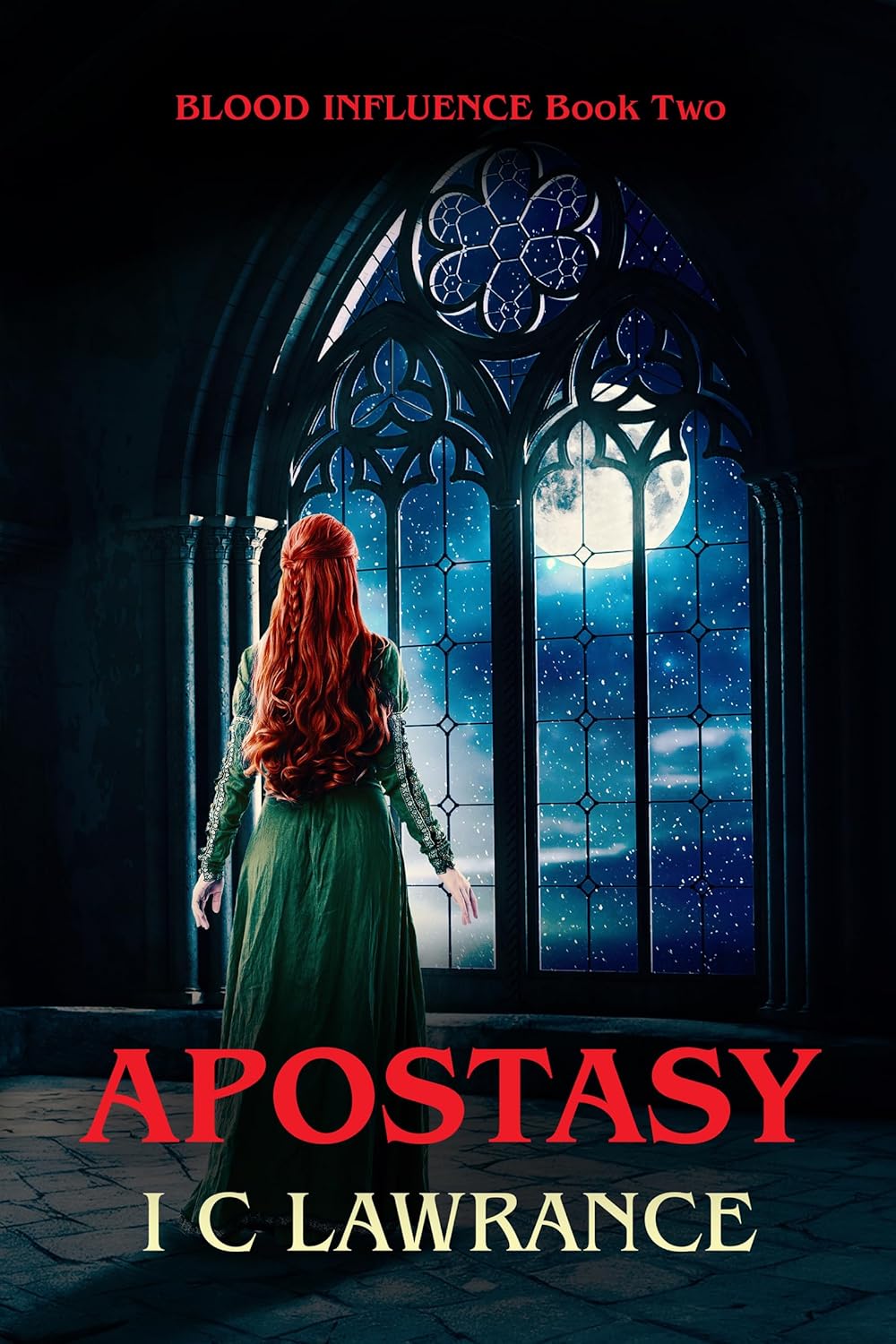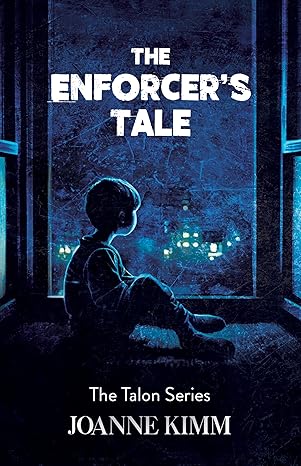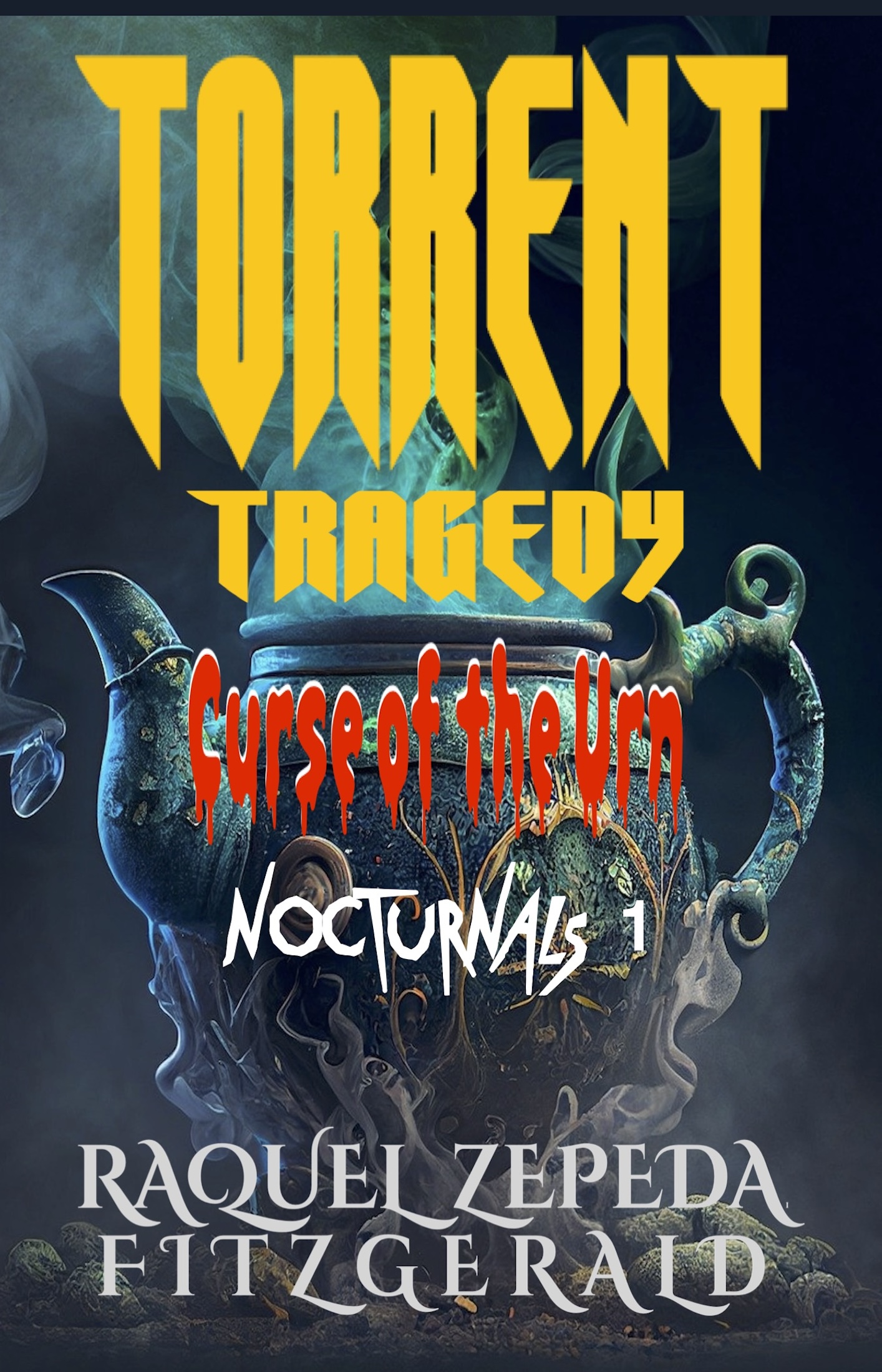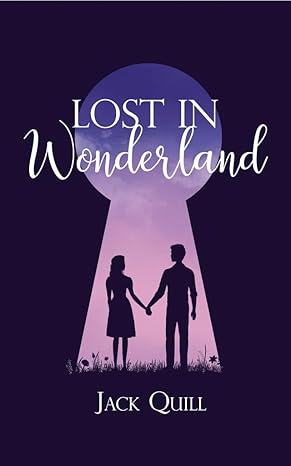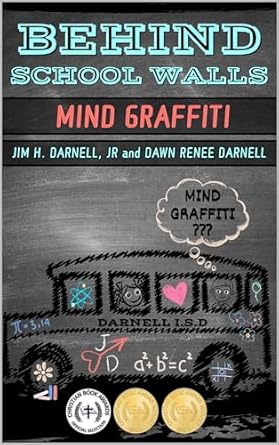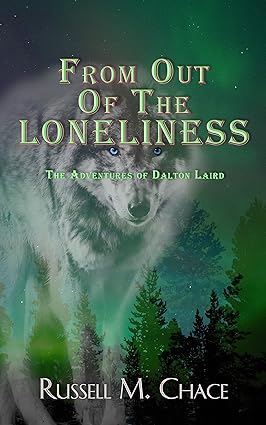Blog Archives
Government’s Role in Religion
Posted by Literary-Titan

Thrown to the Wind follows a young boy and his family fleeing religious persecution from France who wind up on a journey to America. What was the inspiration for the setup of your story?
I have been researching my family genealogy for over 20 years and came across a note in the family histories that claimed that Etienne Gayneau, Sr. and his family fled La Rochelle in the middle of the night to avoid arrest. That intrigued me, so I started digging and found records showing where he lived, even down to the description of the white and blue tilework, and others indicating that 400 Huguenots did, in fact, flee the city in October of 1664. This was during King Louis XIV’s rise to power in his own right as he came of age. I was able to find ship logs, and passenger lists with the travel amounts owed, and then fill in the historical context with information from the King’s decrees (in translation) and other historical background. And the story started to take shape.
Did you find anything in your research of this story that surprised you?
The most surprising thing I discovered was an accounting in the old New Harlem records about how Etienne had been attacked and arrested for “stealing” cherries from Mr. Palmer, who was renting Captain Carteret’s house. The situation was played out and resolved as I described in the book, though the actual event took place a few years later than in my book. The event was simply too good of a story to leave out and resolved a plot point I had, so I included it.
What were some themes that were important for you to explore in this book?
As a history teacher, the curriculum required that we compare and contrast the various reasons for colonization and the colonies in New England, the middle colonies, and Southern colonies. As I was researching this book, I saw a lot of the same themes, but relating to a colony we often ignore in mainstream classrooms. So, it seemed natural to explore them in this story.
The main theme is that of the reasons for immigration to a new and foreign land. As teachers, we often over-simplify them to say that the Pilgrims and Puritans came seeking the freedom to practice their own religion, while the Jamestown colonists came to pursue economic ventures. But as we can see from Etienne’s story, it is more complex. Others also came for religious freedom, but also to pursue trade and to provide a better life for their families.
There is also the theme relating to the government’s role in religion. Two of the freedoms granted in our First Amendment are freedom to practice our own religions, and freedom from a state-instituted religion. These freedoms have direct linkages back to the reasons many settlers came to our shores in the 17th century.
Is this the first book in the series? If so, when is the next book coming out, and what can your fans expect in the next story?
Thrown to the Wind is the first book in the series. The second book, A Home in the Wilderness, and the third book, At the Mercy of the Sea, are both out now.
In the second book, Etienne must navigate the challenges of living in the wilderness. He makes friends with two Lenape teens. When word of an Esopus attack on the Dutch fort at Wiltwyck reaches New Harlem, the settlement begins to build fortifications and to train the militia for war. Etienne is torn between protecting his family’s community and his new Lenape friends, as he becomes embroiled in the Second Esopus War. This book demonstrates the complexity of knowing friend from foe and the diverse relationships between various colonial groups and diverse Native American tribes.
The third book continues Etienne’s journey as he returns to the sea as a sailor, and adds the stories of Alsoomse, Etienne’s Lenape friend, and Abraham, a new friend he meets in the second book. It deals with several coming-of-age themes as all three young people are rebelling against what is expected of them as they try to find places within their respective communities. This book deals with issues relating to gender roles, mixed ethnicity, and standing up for what is right when no one around you supports your stance.
I am working on the fourth book, which should finish this series. I am hoping to get it out next year.
Author Links: GoodReads | Twitter | Facebook | Website | Amazon
Based on a true story.
In October 1660, Etienne Gayneau rushes through the cobblestone streets of La Rochelle, France, to meet his cousin at the harbor. A ship carrying King Louis XIV’s elite musketeers is docking. He dreams of becoming one himself, but has no idea that their arrival will force his Huguenot family to flee in the dead of night. His cousin has offered him a safe haven. Now he must choose – stay and pursue his dream or leave and face an uncertain destiny. Both choices are fraught with dangers. Either way his life will never be the same.
This story traces one boy’s journey from France to America in 1660 as he finds the courage to save himself and those he loves. Etienne Gayneau’s family is fleeing La Rochelle in the dead of night to avoid his father’s certain arrest in the morning, but his cousin has offered him a safe haven. Now he must choose. If he leaves with his family, he will never become a musketeer, but if he stays, he will never see his parents and sisters again. Bothe choices are fraught with dangers and uncertainty. One this is sure – his life will never be the same again.
did in fact flee the city in October of 1664. This was during King Louis XIV’s rise to power in his own right as he came of age. I was able to find ship logs, passenger lists with the travel amounts owed, and then fill in the historical context with information from the King’s decrees (in translation) and other historical background. And the story started to take shape.
Did you find anything in your research of this story that surprised you?
The most surprising thing I discovered was an accounting in the old New Harlem records about how Etienne had been attacked and arrested for “stealing” cherries from Mr. Palmer, who was renting Captain Carteret’s house. The situation was played out and resolved as I described in the book, though the actual event took place a few years later than in my book. The event was simply too good of a story to leave out and resolved a plot point I had, so I included it.
What were some themes that were important for you to explore in this book?
As a history teacher, the curriculum required that we compare and contrast the various reasons for colonization and the colonies in New England, the middle colonies, and Southern colonies. As I was researching this book, I saw a lot of the same themes, but relating to a colony we often ignore in mainstream classrooms. So, it seemed natural to explore them in this story.
The main theme is that of the reasons for immigration to a new and foreign land. As teachers we often over-simplify them to say that the Pilgrims and Puritans came seeking the freedom to practice their own religion, while the Jamestown colonists came to pursue economic ventures. But as we can see from Etienne’s story, it is more complex. Others also came for religious freedom, but also to pursue trade and to provide a better life for their families.
There is also the theme relating to the government’s role in religion. Two of the freedoms granted in our First Amendment are freedom to practice our own religions, and freedom from a state instituted religion. These freedoms have direct linkages back to the reasons many settlers came to our shores in the 17th century.
Is this the first book in the series? If so, when is the next book coming out, and what can your fans expect in the next story?
Thrown to the Wind is the first book in the series. The second book, A Home in the Wilderness, and the third book, At the Mercy of the Sea, are both out now.
In the second book, Etienne must navigate the challenges of living in the wilderness. He makes friends with two Lenape teens. When word of an Esopus attack on the Dutch fort at Wiltwyck reaches New Harlem, the settlement begins to build fortifications and to train the militia for war. Etienne is torn between protecting his family’s community and his new Lenape friends, as he becomes embroiled in the Second Esopus War. This book demonstrates the complexity of knowing friend from foe and the diverse relationships between various colonial groups and diverse Native American tribes.
The third book continues Etienne’s journey as he returns to the sea as a sailor, and adds the stories of Alsoomse, Etienne’s Lenape friend, and Abraham, a new friend he meets in the second book. It deals with several coming-of-age themes as all three young people are rebelling against what is expected of them as they try to find places within their respective communities. This book deals with issues relating to gender roles, mixed ethnicity, and standing up for what is right when no one around you supports your stance.
I am working on the fourth book, which should finish this series. I am hoping to get it out next year.
Author Links: GoodReads | Twitter | Facebook | Website | Amazon
Based on a true story.
In October 1660, Etienne Gayneau rushes through the cobblestone streets of La Rochelle, France, to meet his cousin at the harbor. A ship carrying King Louis XIV’s elite musketeers is docking. He dreams of becoming one himself, but has no idea that their arrival will force his Huguenot family to flee in the dead of night. His cousin has offered him a safe haven. Now he must choose – stay and pursue his dream or leave and face an uncertain destiny. Both choices are fraught with dangers. Either way his life will never be the same.
This story traces one boy’s journey from France to America in 1660 as he finds the courage to save himself and those he loves. Etienne Gayneau’s family is fleeing La Rochelle in the dead of night to avoid his father’s certain arrest in the morning, but his cousin has offered him a safe haven. Now he must choose. If he leaves with his family, he will never become a musketeer, but if he stays, he will never see his parents and sisters again. Bothe choices are fraught with dangers and uncertainty. One this is sure – his life will never be the same again.
Posted in Interviews
Tags: Amanda M. Cetas, author, book, book recommendations, book review, book reviews, book shelf, bookblogger, books, books to read, Children's Colonial US Historical Fiction, Children's European Biographies, Children's Explore Europe Books, ebook, goodreads, historical fiction, history, indie author, kindle, kobo, literature, nook, novel, read, reader, reading, series, story, Thrown to the Wind, writer, writing
Literary Titan Gold Book Award: Fiction
Posted by Literary Titan
The Literary Titan Book Award honors books that exhibit exceptional storytelling and creativity. This award celebrates novelists who craft compelling narratives, create memorable characters, and weave stories that captivate readers. The recipients are writers who excel in their ability to blend imagination with literary skill, creating worlds that enchant and narratives that linger long after the final page is turned.
Award Recipients
Visit the Literary Titan Book Awards page to see award information.
🏆The Literary Titan Book Award 🏆
— Literary Titan (@LiteraryTitan) May 3, 2024
We celebrate #books with captivating stories crafted by #writers who expertly blend imagination with #writing talent. Join us in congratulating these amazing #authors and their outstanding #novels.#WritingCommunityhttps://t.co/tKqUK1c1Ya pic.twitter.com/e3Xm28ieGE
Posted in Literary Titan Book Award
Tags: author, author award, author recognition, book, book award, book recommendations, book review, book reviews, book shelf, bookblogger, books, books to read, childrens books, christian fiction, crime fiction, crime thriller, dark fantasy, ebook, fantasy, fiction, goodreads, historical fiction, historical romance, horror, indie author, kindle, kobo, Literary Titan Book Award, literature, mystery, nonfiction, nook, novel, paranormal, read, reader, reading, romance, science fiction, story, supernatural, suspense, thriller, western, womens fiction, writer, writing, young adult
Literary Titan Silver Book Award
Posted by Literary Titan
Celebrating the brilliance of outstanding authors who have captivated us with their skillful prose, engaging narratives, and compelling real and imagined characters. We recognize books that stand out for their innovative storytelling and insightful exploration of truth and fiction. Join us in honoring the dedication and skill of these remarkable authors as we celebrate the diverse and rich worlds they’ve brought to life, whether through the realm of imagination or the lens of reality.
Award Recipients
THE VOID by Safdar Ali
Visit the Literary Titan Book Awards page to see award information.
🏅 Literary Titan Book Awards 🏅
— Literary Titan (@LiteraryTitan) May 3, 2024
Celebrating the brilliance of #authors who captivated us with their prose and engaging narratives. We recognize #books that stand out for their storytelling and insightful exploration of truth and fiction. #WritingCommunityhttps://t.co/LlD7OExkwP pic.twitter.com/LCNFcM7jEE
Posted in Book Reviews
Tags: #book #story #ebook #read #reader #reading #writer #writing #author #kindle #nook #kobo #goodreads #bookblogger #literature #bookrecommendations #bookreview #bookreviewer #indieauthor #indieauthors #n, author, author award, author recognition, biography, book, book award, book recommendations, book review, book reviews, book shelf, bookblogger, books, books to read, childrens books, christian fiction, crime fiction, crime thriller, dark fantasy, ebook, fantasy, fiction, goodreads, historical fiction, historical romance, horror, indie author, kids books, kindle, kobo, Literary Titan Book Award, literature, memoir, mystery, nonfiction, nook, novel, paranormal, picture books, read, reader, reading, romance, science fiction, self help, story, supernatural, suspense, thriller, western, womens fiction, writer, writing, young adult
From Out of the Loneliness: The Adventures of Dalton Laird
Posted by Literary Titan

In From Out of the Loneliness by Russell Chace, readers are transported to early 1900s Alaska, a time and place dominated by the lucrative pursuits of gold mining and fur harvesting. The narrative introduces us to Dalton Laird, a former Deputy Sheriff whose relatively quiet life is disrupted by the arrival of the villainous Jon Batiste. Laird’s adventure begins in earnest when he rescues an old sourdough, a victim of both a bear attack and Batiste’s ruthlessness, hinting at the larger conflicts revolving around control of local resources.
Chace crafts a tale rich with action, adventure, and romance, set against the rugged backdrop of the Fairbanks region. His deep understanding of the historical and environmental context enriches the story, providing just the right amount of detail to captivate without overwhelming the reader. The vivid descriptions of the Alaskan wilderness and the intricacies of trapping and fur harvesting bring authenticity to the narrative, enhancing the immersive experience. The characters in Chace’s novel are particularly well-drawn, each adding a unique flavor to the story. From the menacing Jon Batiste to his unexpectedly complex daughter, the characters’ interactions and conflicts drive the plot forward compellingly. The antagonists evoke a genuine desire for their comeuppance, while the protagonists garner empathy and support from the reader, thanks to Chace’s skillful character development.
Russell Chace’s narrative style is clear and direct, making the book as accessible as a leisurely walk in the park. His adept use of language and narrative pacing ensures the reader’s journey through the tale is smooth and engaging. From Out of the Loneliness is not just a story about the Alaskan frontier; it explores human resilience and the complexities of love and power in a harsh landscape.
Pages: 257 | ASIN : B07SR8HHCP
Posted in Book Reviews, Five Stars
Tags: action, adventure, author, book, book recommendations, book review, book reviews, book shelf, bookblogger, books, books to read, Christian Westerns, ebook, fiction, From Out of the Loneliness, goodreads, historical fiction, indie author, kindle, kobo, literature, nook, novel, read, reader, reading, Russell M. Chace, story, western, writer, writing
The Gambler’s Game
Posted by Literary Titan

The Gambler’s Game: Based on the True Story of The Man Who Broke the Bank at Monte Carlo, masterfully weaves a captivating narrative that traces Bill Darnborough’s fascinating transformation from an ambitious baseball player to a distinguished gambler against the dynamic backdrop of late 19th-century America. James Darnborough meticulously documents Bill’s journey, starting in his early years in Bloomington, Illinois, where he rises as a promising pitcher against the odds of familial opposition.
The opening chapters are particularly evocative, exploring Bill’s internal struggles and his stepfather’s disapproval, painting a compelling portrait of a young man wrestling between his dreams and his existing circumstances. His ascent to professional baseball, first with the Bloomington Reds and then with the Denver Grizzlies, is captured with exceptional sensitivity to the socio-economic and cultural nuances of the era. As Bill moves from an underdog in Denver to a recognized figure in baseball, the narrative deftly captures the unpredictable nature of sports careers, imbuing the story with both inspiration and poignant realism.
The shift in focus from baseball to gambling in the latter part of the book is handled with remarkable finesse. The narrative strength here lies in its ability to draw insightful parallels between Bill’s strategic approaches in baseball and his tactics in gambling, illustrating how skills in one arena can ingeniously translate to another. This segment is charged with tension and drama, vividly bringing to life the gritty, high-stakes world of early 20th-century Monte Carlo gambling. This book does more than simply recount Bill’s life; it explores broader themes such as ambition, identity, and the complexities of adapting to both internal changes and shifts in the surrounding world. The epilogue serves as a poignant commentary, elegantly marking Bill’s journey from the baseball fields to the gambling tables.
The Gambler’s Game is a richly textured historical narrative that provides profound insights into American sports and gambling cultures of the late 19th and early 20th centuries. The author’s meticulous attention to detail and thematic depth make this book a compelling exploration of an individual’s relentless quest to redefine himself amidst America’s rapidly transforming landscape.
Pages: 478 | ASIN : B0CW1X7Z1C
Posted in Book Reviews, Five Stars
Tags: author, biographical fiction, biographical sports fiction, book, book recommendations, book review, book reviews, book shelf, bookblogger, books, books to read, ebook, goodreads, historical fiction, indie author, James Darnborough, kindle, kobo, literature, nook, novel, read, reader, reading, story, The Gambler’s Game, writer, writing
Her Last Full Measure
Posted by Literary Titan

Gail Combs Oglesby’s Her Last Full Measure, part of The Centenary Chronicles – Tales of American Women series, offers a poignant glimpse into the Civil War era. Drawing inspiration from the sacrifices made by her own ancestors, Oglesby crafts a narrative rich in emotion, centering on themes of love, strength, and resilience.
Set in 1860s Michigan, the story introduces us to Millicent and her family, who enjoy a peaceful existence on their farm until the war disrupts their tranquility. As her husband Matthew enlists to fight for the abolition of slavery, Millicent is left to navigate the hardships of life on the home front. The novel movingly portrays her struggles, emphasizing the often-overlooked challenges faced by women during this tumultuous period. Oglesby’s narrative straddles the line between historical accuracy and fictional dramatization to shed light on the experiences of women who endured the era’s trials largely unrecognized. Particularly compelling is Millicent’s journey to the White House, advocating for the humane treatment of prisoners—a testament to her unyielding spirit and determination.
Her Last Full Measure is more than just a tale of survival; it’s a tribute to the resilience and fortitude of those who lived through one of America’s most challenging times. This novel not only honors the memory of the women and children of the Civil War but also connects readers to the human aspects of perseverance and hope amidst adversity. It is a thought-provoking read that resonates with the emotional and historical complexities of its time.
Pages: 198 | ASIN : B0CT6SS1G7
Posted in Book Reviews, Five Stars
Tags: author, book, book recommendations, book review, book reviews, book shelf, bookblogger, books, books to read, ebook, Gail Combs Oglesby, goodreads, Her Last Full Measure: The Centenary Chronicles-Tales of American Women, historical fiction, history, History of Women, indie author, kindle, kobo, literature, nook, novel, read, reader, reading, story, writer, writing
“Undesirable”
Posted by Literary_Titan

The Invisible Ones follows a young woman who, after being separated from her siblings and institutionalized, strives to overcome abuse and reclaim her freedom amidst a backdrop of eugenic oppression. What was the inspiration for the idea behind your story?
Growing up, I had heard stories about female family members who were institutionalized. The stories never seemed to add up. The women were never released and their reasons for being there didn’t seem to make sense to me. I decided to research the topic of women and institutionalization and found a vast history of the practice of locking away women and those who were poor or considered “undesirable” dating back to the American eugenics’ movement. The goal at the time was to take those people considered inferior out of the general population and prevent them from having families of their own so they did not propagate their inferior genes. Essentially, the goal was to improve the population by removing those who didn’t seem to fit a high standard set by those in power.
Anna Wilson’s character is resilient. Can you share more about your process for developing her character and ensuring her experiences felt authentic?
Before creating Anna’s character, I researched women who had been impacted by the eugenics movement by reading first-person narratives, manuals for implementing the practice of eugenics, and accounts of women who had been institutionalized. Eventually, her voice came to be, and the story itself is a mixture of many of the women featured in the narratives I read. I blended their experiences to create one that would have been likely in Pennsylvania in the early 1900s.
How did you approach the research for this novel, particularly the historical aspects of institutional practices and societal attitudes during that era?
The research part of this novel was interesting, and there was no lack of information if you knew where to look. I started by reading every book I could find on American eugenics and the institutionalization of women, such as Imbeciles, War Against the Weak, and Women of the Asylum. From there, I visited the Vineland Historical Society and toured the grounds of the former Vineland Training School. I learned that New Jersey had a more progressive approach to individuals who were institutionalized, and they did not practice forced sterilization. This prompted me to move my story to Pennsylvania, where the practice was not uncommon. I also found interesting information about daily life in the early 1900s in old, local newspapers. Further, I watched video interviews of people who were institutionalized due to their undesirable traits, whether it was because they were poor, inebriates, women of loose morals, or uneducated. The eugenics movement lasted into the 1970s, so there were interesting video accounts of how people lived in these institutions that informed much of my book, including the scenes involving punishment and daily routines.
What is the next book that you are working on and when will it be available?
I’m currently finishing up a draft of a thriller, which is very different from The Invisible Ones. I’ve had a lot of readers ask about a possible sequel to The Invisible Ones. People want to know what happens with Anna’s mom, and I think that would be an interesting topic to explore. It would also give me an opportunity to delve into the impact long-term institutionalization had on those locked away in asylums.
Author Links: GoodReads | Twitter | Facebook | Website
Posted in Interviews
Tags: author, book, book recommendations, book review, book reviews, book shelf, bookblogger, books, books to read, ebook, fiction, goodreads, historical fiction, indie author, Jaime Grookett, kindle, kobo, literature, nook, novel, read, reader, reading, story, The Invisible Ones, writer, writing
Thrown to the Wind
Posted by Literary Titan

Thrown to the Wind by Amanda M. Cetas transports young adult readers to 1660s France, introducing us to Etienne Gayneau, a young boy whose aspirations soar beyond his father’s wishes for him to continue the family stove-making business. Set against a backdrop of religious persecution, this historical fiction novel traces Etienne and his family’s harrowing exodus from France to Amsterdam and finally to America. Etienne, grappling with familial expectations and the loss of his brother, discovers strength in the steadfast love of his relatives. This emotional support becomes his anchor as they endure the hardships of their journey. Along the way, Etienne encounters numerous perils that test his fortitude, compelling him to either conform to family expectations or forge his own destiny.
Thrown to the Wind is an enthralling narrative of endurance, love, and the relentless pursuit of one’s future. It skillfully combines historical richness with the essence of human resilience. The tale is a testament to hope, with Etienne navigating the storms of fate in his quest for redemption and a new beginning. As a devotee of historical fiction, I approached this book with high expectations, which were not only met but exceeded. The author’s meticulous research enriches the narrative, blending historical precision with engaging storytelling. The vivid descriptions and dynamic pacing make it difficult to put the book down. Etienne’s evolution from a hesitant boy into a cornerstone of strength for his family is profoundly moving, illustrating the power of human connections formed under the most challenging circumstances. The relationships Etienne forms—whether with his cousin, a girl he bonds with, or comrades on a ship—highlight the significance of interpersonal connections across life’s tumultuous journey. His sacrifices and the poignant moments of relinquishing personal dreams for family resonate deeply, enhancing the emotional depth of the narrative. The recurring motif, “Everything will look better in the morning,” poignantly underscores the family’s daily struggles with a sense of enduring hope.
Thrown to the Wind is a captivating exploration of historical events through the lens of personal struggle and growth. It not only entertains but enlightens, leaving readers more connected to the past and reflective of the human condition.
Pages: 246 | ASIN : B07VBHD217
Posted in Book Reviews, Five Stars
Tags: Amanda M. Cetas, author, book, book recommendations, book review, book reviews, book shelf, bookblogger, books, books to read, Children's Colonial US Historical Fiction, Children's European Biographies, Children's Explore Europe, coming of age, ebook, goodreads, historical fiction, indie author, kindle, kobo, literature, nook, novel, read, reader, reading, story, teen, Thrown to the Wind, writer, writing, young aduld fiction, YT Fiction














